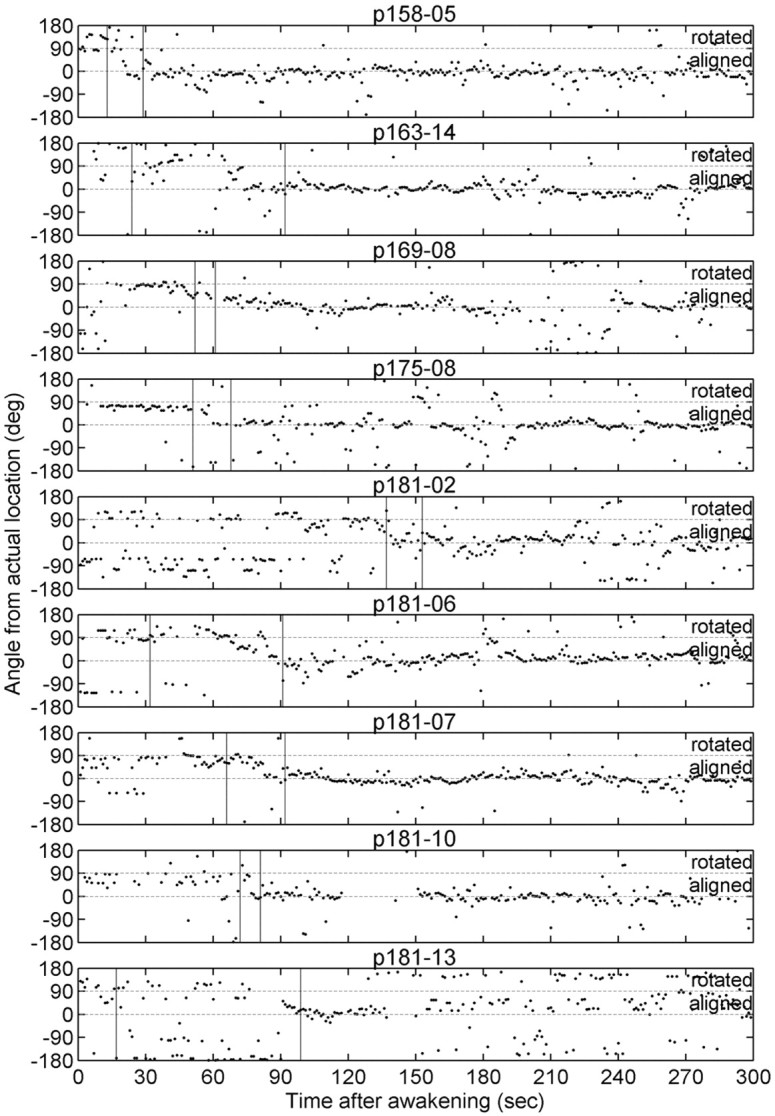Figure 5.

Reorientation to the distal room cues after full awakening. To determine at what point the rat's spatial map realigned with the distal room cues after full awakening (i.e., the last arousal before the rat began walking around), Bayesian reconstruction was used to determine the rat's internal representation of its current location in space, as described in Materials and Methods, and the angle on the arena between the rat's actual and reconstructed position was calculated and plotted for each data set as a function of time after awakening (bin size = 1 sec; only bins in which at least 10 spikes occurred and at least 3 cells fired were used in the reconstruction). In each of these data sets, the arena had been rotated 90° clockwise during sleep; thus, the moment that the rat realigned its spatial representation with the distal visual cues is marked by a change in the angle between its real and reconstructed position from +90 to 0°. The first vertical line in each panel marks the moment the rat walked at least 10 cm away from the location in which it awoke, and the second vertical line represents the moment the rat walked at least 50 cm away; in most data sets, the rat realigned its spatial map within this time interval. Thus, the realignment appears to occur shortly after the rat begins walking through its environment.
